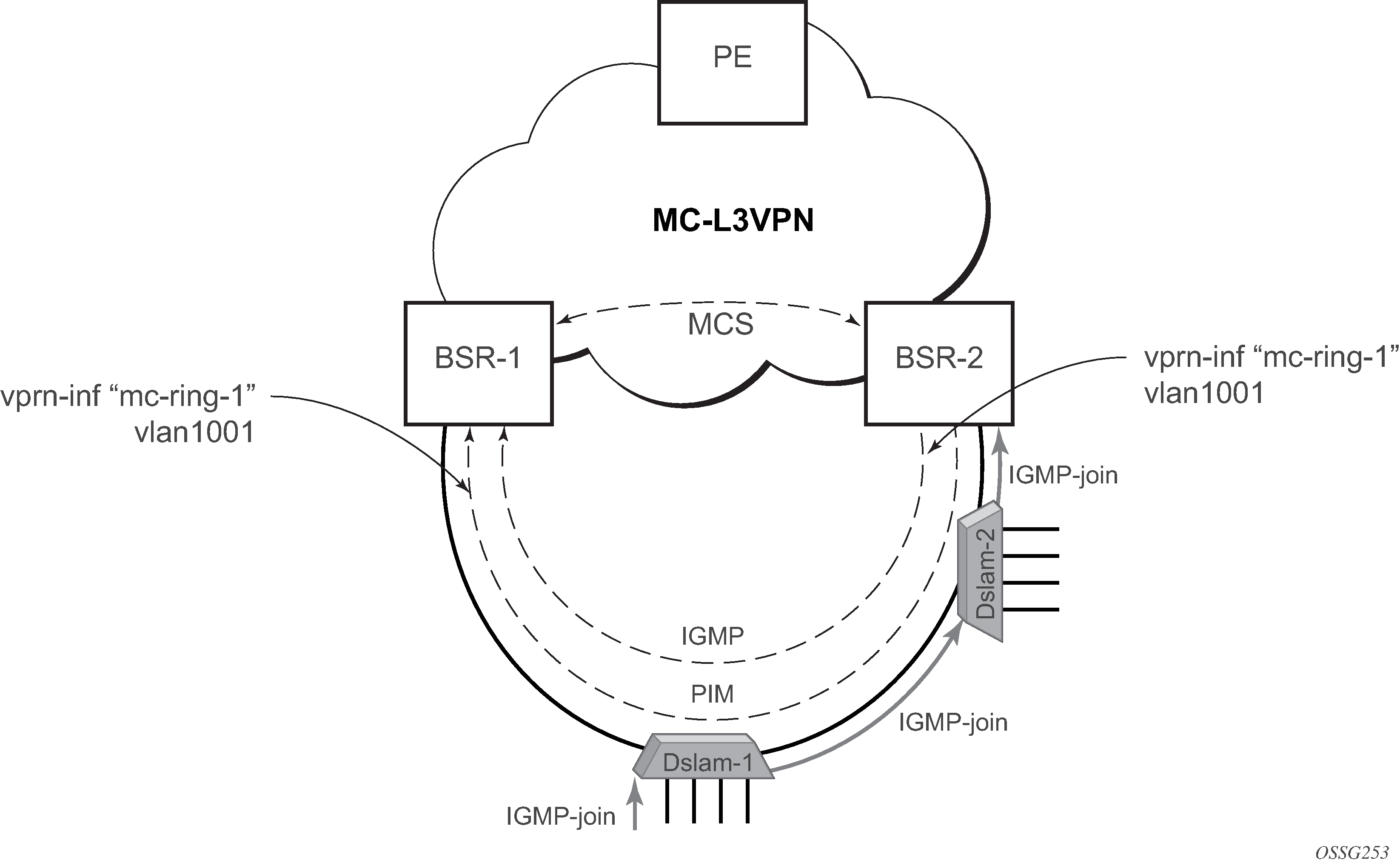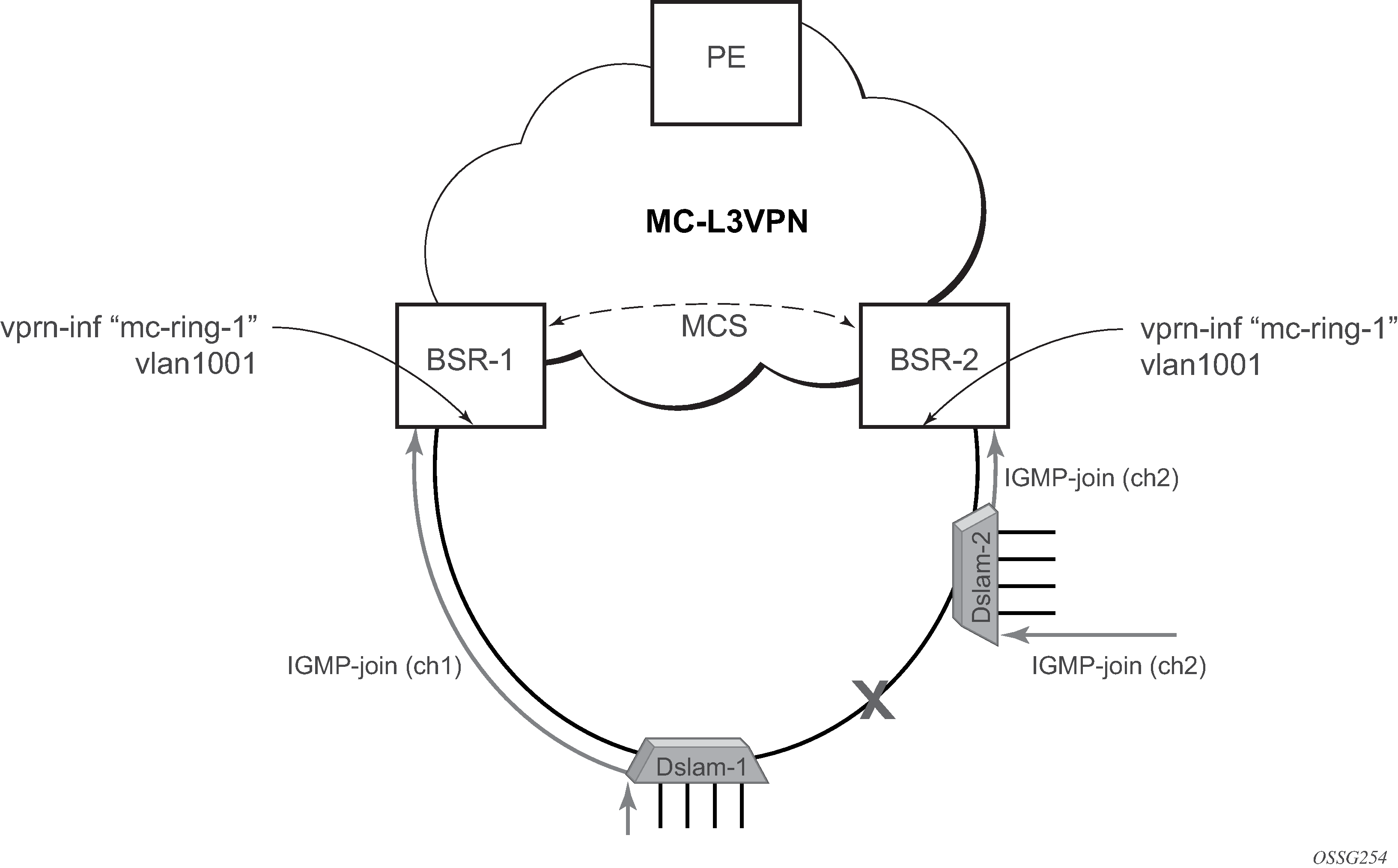The typical implementation of MC services at the network level is shown in Figure: MC services in a Layer 3-Ring topology (a).

The IGMP is used to register joins and leaves of the user. IGMP messaging between BSRs is used to determine which router performs the querier role (BSR2 in Figure: MC services in a Layer 3-Ring topology (a)). PIM is used to determine which router is the designated router and the router that sends MC streams on the ring.
The access nodes have IGMP snooping enabled and from IGMP messaging between BSR, they are aware which router is the querier. In the most generic case, IGMP snooping agents (in access nodes) send the IGMP-joins messages only to IGMP-querier. The synchronization of the IGMP entries can be then be performed through MCS. In some cases, access nodes can be configured in such a way that both ring ports are considered as m-router ports and IGMP joins are sent in both directions.
All of the above is a steady state operation which is transparent to the topology used in a Layer 2 domain.
A ring-broken state is shown in Figure: MC services on a Layer 3-ring topology (b).
In this case, IGMP and PIM messaging between BSRs is broken and both router assume role of querier and role of designated router. By the virtue of ring topology, both routers see only IGMP joins and leaves generated by host attached to a particular ‟half” of the ring. This means that both routers have ‟different” views on the dynamic IGMP state.

In principle, MCS could be used to synchronize both routers, but in case of a Layer 2 ring, the implementation sends all IGMP messages to the primary BSR which then performs IGMP processing and consequently, MCS sync. As a result, any race conditions are avoided.
Another ring-specific aspect is related to ring healing. The ring continuity check is driven by BFD which then drives SRRP and PIM messaging. BFD is optimized for fast detection of ring-down events while ring-up events are announced more slowly. There is a time window when routers are not aware that the ring is recovered. In the case of MC, this means traffic is duplicated on the ring.
To avoid this, the implementation of BFD provides a ‟raw mode” which provides visibility on ‟ring-up” events. The protocols, such as SRRP and PIM, use this raw mode instead of the BFD API.